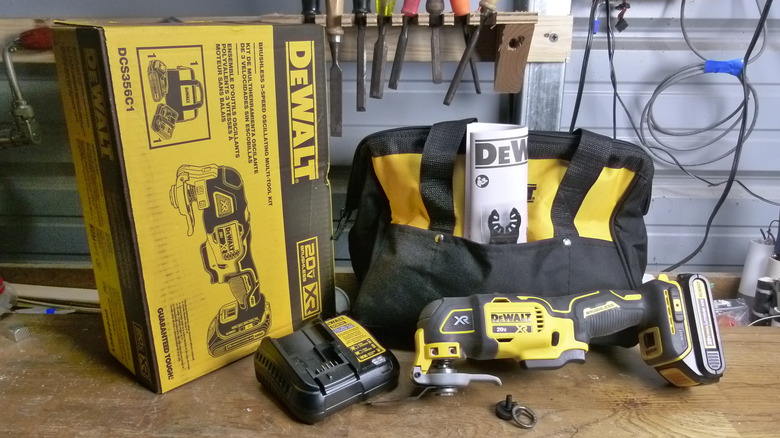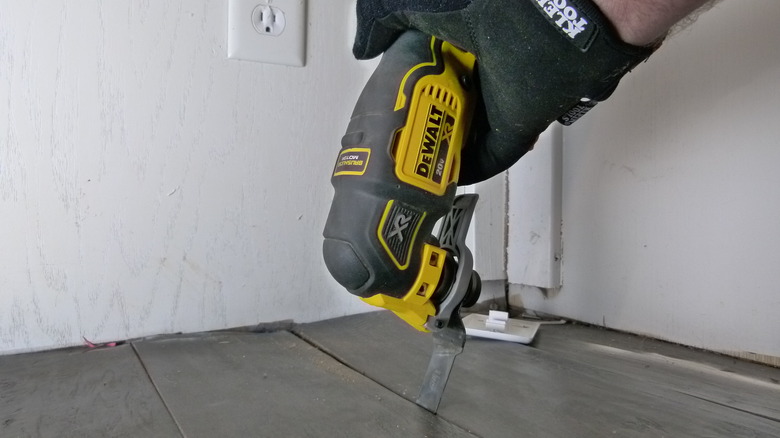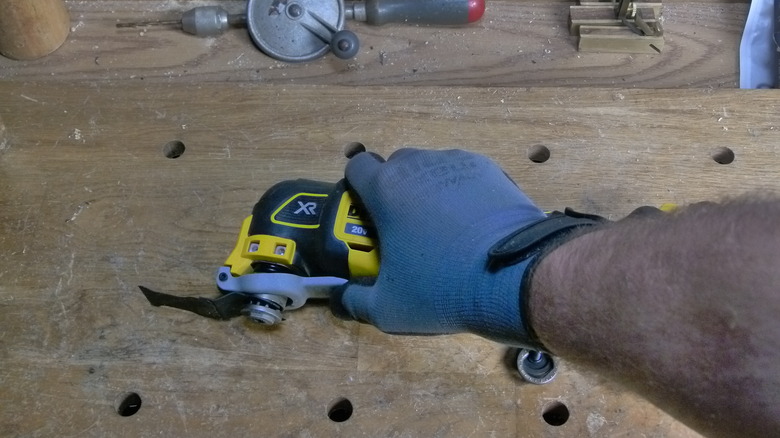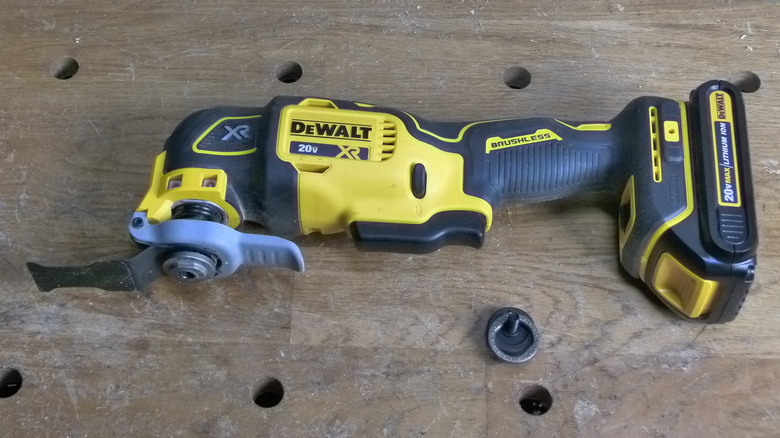We Tested The DeWalt 20-Volt Max XR Oscillating Saw & It Cut Through Our Expectations
People might quit their jobs after a vacation or some weekend soul-searching with a significant other, but tools quit their jobs right smack in the middle of the job itself. So it was with my Dremel Multi-Max oscillating saw, which simply refused to switch on in the middle of removing some flooring where absolutely nothing else would work. A quick look at some websites turned up the DeWalt 20-volt Max XR oscillating saw with a 1.5 amp-hour battery, charger, tool bag, and a couple of blades for $99.00 at Lowe's – $100 off its regular price and comparably priced with corded versions from other brands. Already knee-deep in the 20-volt Max battery ecosystem, I took the plunge and picked one up an hour later. It not only did the rest of the job flawlessly but also kind of renewed my enthusiasm for these multi-tools overall.
Even though oscillating saws made our list of tools every homeowner should have, they're also on the short list of power tools I've never been happy with, alongside reciprocating saws and jigsaws — all deeply flawed (in my opinion) tools with blades that don't spin but instead move back and forth. The fact that one end of the blade is unsupported causes some issues for jigsaws and reciprocating saws. If I own a jigsaw blade that's not bent, it's because I've hammered it flat. And reciprocating saws seem as likely to reciprocate me as the blade itself. But my distaste for oscillating saws has more to do with the fact that, as a class, they don't seem to do a great job unless you replace their blades every four minutes.
What I was looking for in an oscillating saw
Oscillating multi-tools excel at making cuts in the middle of material, in tight spaces, and flush against edges that are difficult to cut with other power tools. They're often used as jamb saws, for example, to cut the bottoms of door jambs and make space for flooring or in place of zip saws for making cutouts for electrical boxes that house receptacles, switches, etc. They're good at other specific tasks when outfitted with the right attachments — sanding, scraping, and more — and they're one of the best tools around for grout removal. The particular DeWalt kit I purchased came with only bi-metal and wood-cutting blades, but it included a universal adapter that would allow me to use other brands of blades and accessories.
The work at hand was removing flooring in two ways with the multi-tool: cutting through the entire thickness of engineered hardwood, including its extremely hard wear layer; and removing some of the same flooring in a different part of the house by cutting through the overlapping plywood click-lock system ... a considerably easier task. In addition to the flooring demolition, I planned to use the bi-metal blade to test cutting through some nails (as one might when removing trim); a Dremel sanding attachment to test its effectiveness at that unpleasant task, and a scraping blade of unknown provenance to remove globs of paint and adhesive from the concrete subfloor I was working on. (This step was skipped by the original flooring installers ... one of several reasons I found myself replacing the floor after only three years.)
The joy of changing blades ... a lot
After years of experience with Dremel and Harbor Freight oscillating saws, the first thing I noticed when using the DeWalt was the ease of changing blades and accessories, greatly improving what used to be a chore involving finding the right Allen wrench to remove the old blade and then to affix a new one. Tools that require hex keys are always one step away from disaster because it's easy to misplace the little wrenches, which are usually unrelated to your actual task, preventing you from getting started until you find one.
DeWalt's solution — identical to the mechanism for changing the blade on a Craftsman oscillating tool (they're made by the same company) — is a spring-loaded trigger that opens the blade interface and then returns the tool to its ready state with the new blade held in place by spring tension. You do need an Allen wrench to install the universal blade adapter and, oddly, the DeWalt doesn't come with one. But I was able to use DeWalt, Milwaukee, Dremel, and unbranded blades without the adapter.
That's a lot of focus on ease of changing blades, and I offer it for two reasons. First, it can be difficult, but DeWalt's approach wasn't. And second, the saw simply met my expectations when it came to cutting. I expect a saw to cut things without much complaint, and it chewed through wood and nails without hesitation. It also scraped up the paint painlessly, though the blade was considerably shorter by the end of the job.
A win, with inevitable losses
While the DeWalt 20-volt XR multi-tool was a pleasure to use, it could not entirely escape the blade problem. As a saw, it does as good a job as I can imagine, but there's an upper limit to how useful one of these tools can be, and it's imposed by the blades themselves. As far as I can tell, every common blade on the market is insufficient to the work of an oscillating saw. I have often found myself with an angle grinder cutting new teeth in a worn-down blade just to finish a task.
The DeWalt cuts much better than my other saws, and it didn't seem to wear the blades any faster. Since the DeWalt's relatively paltry 1.6-degree arc swing doesn't seem likely to reduce blade wear, all I can think is that it has to do with the three-speed switch and the fine-tuning you can do with the variable-speed trigger. And, of course, user error is a factor. While I tend to run the blade too fast and apply too much pressure rather than letting the blade do the work, perhaps I did better at both when using a better saw.
Battery life was also a pleasant surprise. As the owner of XR batteries between 1.5 and 5 amp-hours, I'm well aware of how fast even a brushless motor can run through battery power. DeWalt claims the multi-tool's efficient brushed motor delivers up to 57% more battery life than a brushed motor, and I believe it. I almost made it through the first job on 1.5 amp-hours, and I was expecting to need more like 4.



